Allegiance Belgium Parents Omer Coppens Years of service 1912 - 1940 Unit 9 Squadron | Rank Major Books Days on the Wing Name Willy Coppens | |
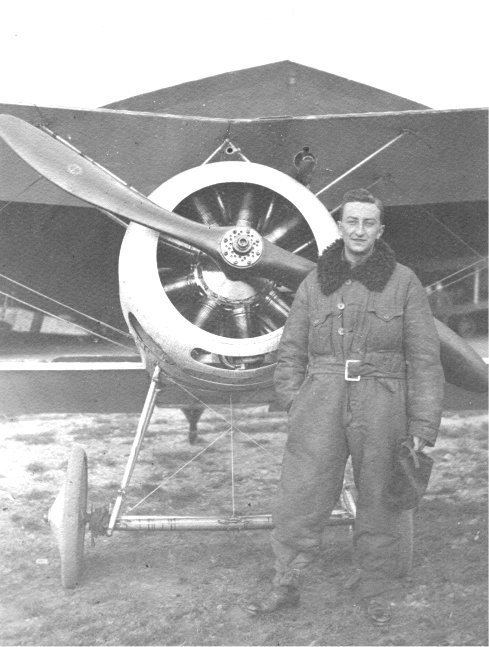 | ||
Service/branch Grenadiers, Compagnie des Aviateurs Awards Order of Leopold II, Order of the Crown, Belgian Croix de Guerre, French Legion d'Honneur, Serbian Order of the White Eagle, British Distinguished Service Order, British Military Cross, French Croix de Guerre Died December 21, 1986, De Panne, Belgium | ||
Willy coppens
Willy Omer François Jean baron Coppens de Houthulst (6 July 1892 – 21 December 1986) was Belgium's leading fighter ace and the champion "balloon buster" of World War I. He was credited with 37 confirmed victories and six probables.
Contents
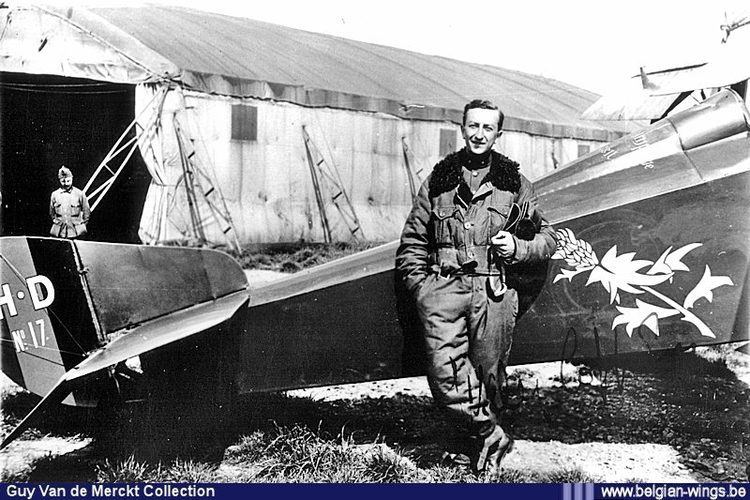
Early life
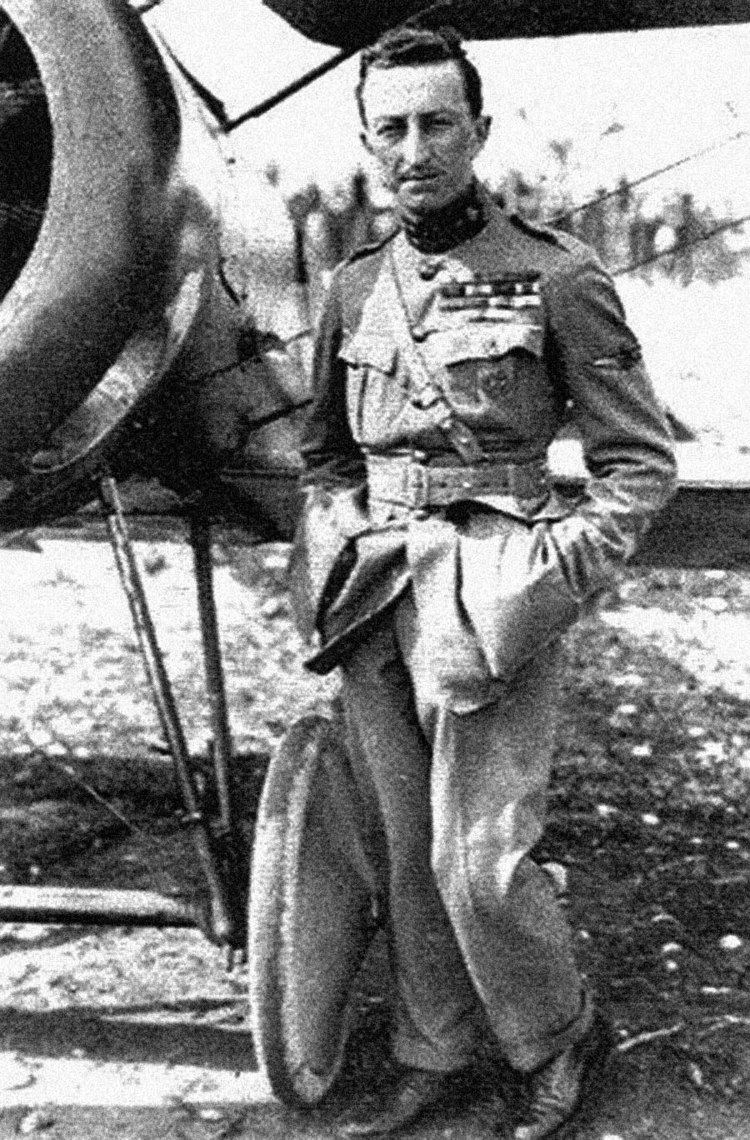
Coppens was born in Watermael-Boitsfort, son of Omer Coppens a Belgina impressionistic painter that studied in the Royal Academy of Ghent. He was conscripted into the army in 1912, to serve with the Premiere Regiment Grenadiers.
World War I
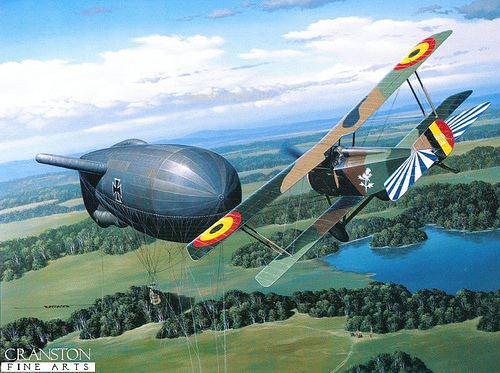
In 1914, following the German invasion of Belgium, Coppens transferred to The Motor Machine Gun Corps. On 6 September 1915, he signed up for flight training in the Compagnie des Aviateurs. Ultimately, due to insufficiencies in Belgian training, he took eight weeks of leave to train to fly. He and 39 other Belgians learned to fly on their own expense in Britain. He received his pilot's certificate on 9 December 1915. After this training in Britain he had further training at the Farman School in Étampes, France and joined the Sixieme Escradrille as a sergent 1st class (Sergeant First Class) on 8 April 1917 flying BE-2c two seaters. Later that month, he was assigned to Quatrieme Escadrille to fly a Farman pusher. On 1 May, he received a Sopwith 1½ Strutter two seater and promptly flew it into his first aerial combat.
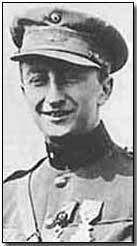
In mid July, he transferred to the single seater fighter unit 1ère Escadrille de Chasse (1st Pursuit Squadron). He received the last remaining Nieuport 16 in the squadron; everyone else had upgraded to Nieuport 17s. When Hanriot HD.1s were offered to the squadron, he was the only pilot to initially accept one. His enthusiasm for the aircraft type prompted other pilots to also move over to Hanriots.
On 19 August Coppens was promoted to Adjutant. He continued his nervy but unsuccessful combat career against enemy aircraft until 17 March 1918. On that day he carried out his first attack on German observation balloons, as an aid to a ground assault by the Belgian Army. Though handicapped by lack of incendiary ammunition he punctured two balloons, causing the observers to bail out and the balloons to collapse to the ground.
Finally, on 25 April Coppens scored his first victory by downing a Rumpler two seater. On 8 May he finally found his metier, when he shot two balloons down in flames.
A week later, using his usual tactics of close range fire, Coppens cut a balloon loose from its ties. It bounced up beneath him and momentarily carried his Hanriot skyward. After his aircraft fell off the balloon, he restarted its engine and flew back to base. The balloon sagged into an explosion.
Later when on another attack run, he got shot at from a balloon. He parked his plane on top of the damaged balloon, shut down his engine in order to protect its propeller, and waited until the balloon descended to slide off the balloon and fly away.
From then on, Coppens' record was spectacular. Between April and October 1918 he was credited with destroying 34 German observation balloons and three airplanes, nearly as many victories as Belgium's other five aces combined. Unlike most fighter pilots of World War I, who used .303 caliber or 7.92 mm guns, Coppens used a larger bore 11 mm Vickers machine gun, having upgraded his weaponry prior to June 1918.
In June, he was promoted to sous lieutenant, thus becoming an officer. His royal blue plane with its insignia of a thistle sprig wearing a top hat became so well known that the Germans went to special pains to try to kill him. On 3 August he shot down a balloon booby-trapped with explosives that when detonated from the ground narrowly missed killing him. The flaming wreckage of the balloon "fell swift as doom on the watching [German] staff officers, killing many and injuring the rest".
On his last mission, 14 October, Coppens downed a balloon over Praatbos and was attacking one over Torhout when he was severely wounded by an incendiary bullet, smashing the tibia of his left leg and severing the artery. Coppens crash landed near Diksmuide and was taken to hospital, where his leg was amputated.
Coppens achieved all his victories flying a Hanriot HD.1 fighter.
After the war
For his wartime service he was knighted, becoming Willy Omer Francois Jean Coppens de Houthulst, for a forest in his squadron's operating area. He was decorated by Belgium, France, Britain, Portugal, Italy, Poland, and Serbia. His memoir, Days on the Wing, were published in 1931 and reissued in the 1970s as Flying in Flanders.
Between the two World Wars Coppens was Belgian air attaché to four nations. In September 1928, despite his disability, he set a parachute jump record by leaping from 19,700 feet (6,005 meters); this record stood for four years. He retired to Switzerland in 1940, organising resistance work and marrying. In the late 1960s he returned to Belgium and lived his last five years with fellow Belgian ace Jan Olieslagers's only daughter until his death in 1986.
